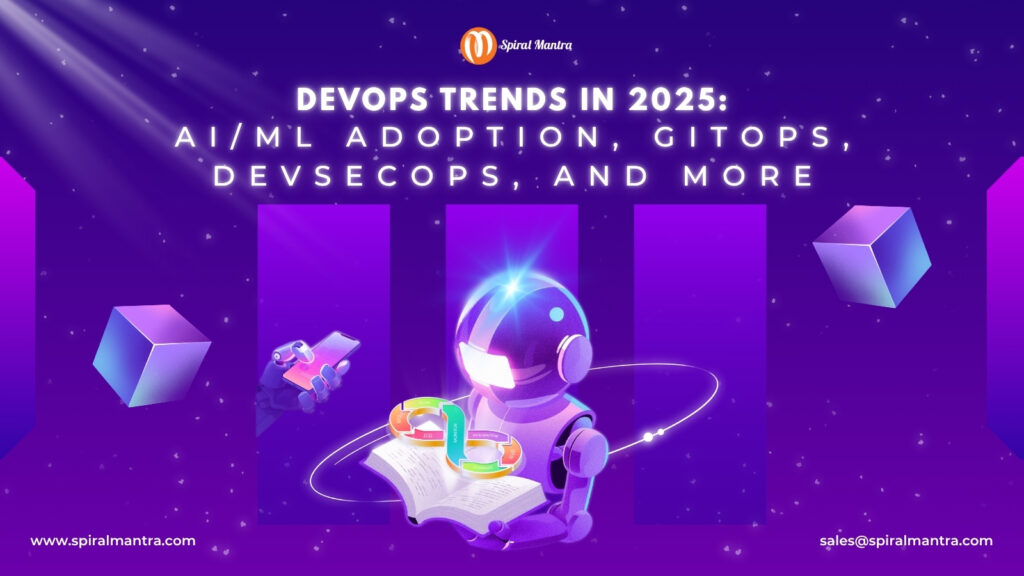Over the years, DevOps has become a cornerstone to put forward cutting-edge technologies with new methodologies to derive focus on automation and security. Platform engineering has matured beyond its initial concept, moving toward highly composable internal developer platforms (IDPs) that leverage API-first architectures. These platforms can be accessibly implemented at every stage of GitOps workflows by asserting infrastructure-as-code (IaC) templates, allowing developers and engineers to provision cloud environments without any direct interface with cloud resources.
This article provides a roadmap for the top DevOps trends of 2025, which continue to transform organizations' modern software development and deployment structures. Ideally, before moving forward, you should identify the leading DevOps statistics currently ruling the market.
What DevOps Actually Stands For?
Identifying the definition of DevOps: It describes a culture of collaboration between IT and developers that eases operations while seamlessly speeding up the deployment cycle of applications and software. This eventually optimizes efficiency and enhances product development, making organizations more viable.
Considering the technology, Kubernetes has established itself as the prominent orchestration tool with multi-cloud resource interfaces, while FinOps integration directly within CI/CD pipelines has become essential for businesses. The move from monolithic pipelines to composed microservice-style workflows has reduced build times while increasing system resilience. GitOps controllers now coordinate complex progressive delivery patterns using traffic shaping to minimize deployment risk without sacrificing velocity.
Future of DevOps with Major Trends in 2025 and Beyond
The adoption of DevOps has lit up the transformation pathway in IT practices, enabling businesses to stay ahead of the curve. And, to help organizations, Spiral Mantra, a prominent
Azure DevOps consultant, offers the best predefined solutions to carry out the automation task impeccably.
The most recent trends indicate Kubernetes and cloud-native technologies to manage organizations' infrastructure and scale applications; thus, with the following article, let’s explore more key trends that will rule the upcoming years.
Start with The Integration of AI and Machine Learning
AI/ML leveraging into DevOps processes has now become a reality, all thanks to AI-powered tools, which eventually help to automate and optimize repetitive tasks and resource allocation. It prominently makes an impact on predictive analytics by predicting potential failures, speeding up the CI CD pipeline, and minimizing downtime by resolving issues without human intervention.
DevSecOps Is A New Security Focused Trend
With the surroundings of increased cyber threats, DevSecOps has potentially gained so much importance, as it’s a new security-focused DevOps trend. The platform offers multiple benefits and a development lifecycle, such as shift-left security, as the feature helps to detect security vulnerabilities and address them during the entire coding phase. Another is automated security testing, which allows Azure DevOps teams to run automated code analysis for the entire software development pipeline.
GitOps: The Emerging Paradigm for Continuous Delivery
Over the years, GitOps has revolutionized the CI CD pipeline by managing deployments and software infrastructures using Git repositories. The technology simplifies and accelerates the process by streamlining workflows and enhancing team collaboration within the development and operations department.
Having a say to understand its benefits, GitOps facilitates version-controlled infrastructure, allowing teams to track changes along with features like rollback updates across the environment and a full audit trail.
Besides this, its declarative infrastructure management deploys syntax to activate the desired state of the system and pushes it to automatically correct and predict a stable state.
Serverless Computing/Cloud Native Architecture
Cloud-native architecture and serverless computing are two major pillars of DevOps in 2025, as they allow developers to majorly focus on writing code without any intervention in managing software infrastructure. The adoption of technology allows teams of top
DevOps consulting companies to access the benefits of serverless CI/CD pipelines without perturbing the underlying infrastructure. There are major serverless tools and platforms like Azure Functions, AWS Lambda, and Google Cloud Functions, which cohesively allow teams to focus more on deliverables.
Cloud-native tools have also gained popularity due to their optimal performance. Tools like Kubernetes, Prometheus, and Docker already hold a massive market share in data and technology, as these platforms are best suited to adopt microservices-based architecture and manage containers in cloud environments.
Some other key trends are
Edge computing, which requires real-time processing with maximum bandwidth efficiency.
Infrastructure as Code is a new norm that enables automatic and scalable infrastructures in all development, while making sure to uniformly maintain the environment.
Hybrid and multi-cloud strategies allow businesses to deploy self-independent service providers.
Let’s Cap It Off
The growing adoption of Kubernetes and
AIOps and the expansion of hybrid or multi-clouds will shape the DevOps future in 2025. However, with the right strategies, businesses can leverage cloud infrastructure to scale robust security and resilience.
With over years in the data engineering industry, Spiral Mantra can leverage and guide businesses through the developing
DevOps landscape. We have a team of AWS Certified Cloud Consultants, skilled Azure DevOps Consultants, and GCP Cloud Consultants with a track record of 100% delivery of solutions.
